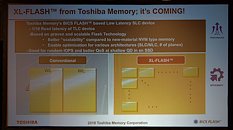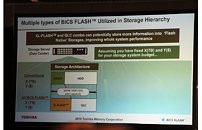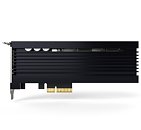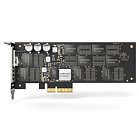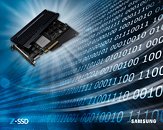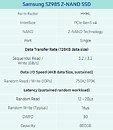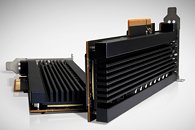Apr 10th, 2025 05:55 EDT
change timezone
Latest GPU Drivers
New Forum Posts
- How is the Gainward Phoenix Model in terms of quality? (2)
- Looking for input on fan placement for my Define R5 (3)
- Will you buy a RTX 5090? (478)
- Downgrading bios on asrock A320 board (1)
- Star Citizen (2515)
- ## [Golden Sample] RTX 5080 – 3300 MHz @ 1.020 V (Stock Curve) – Ultra-Stable & Efficient (45)
- RX 9000 series GPU Owners Club (276)
- random system shutdown with fans running at full speed (17)
- Shadow of the Tomb Raider benchmark (555)
- Do you use Linux? (573)
Popular Reviews
- The Last Of Us Part 2 Performance Benchmark Review - 30 GPUs Compared
- ASRock Z890 Taichi OCF Review
- MCHOSE L7 Pro Review
- Sapphire Radeon RX 9070 XT Pulse Review
- PowerColor Radeon RX 9070 Hellhound Review
- Upcoming Hardware Launches 2025 (Updated Apr 2025)
- Sapphire Radeon RX 9070 XT Nitro+ Review - Beating NVIDIA
- Acer Predator GM9000 2 TB Review
- ASUS GeForce RTX 5080 Astral OC Review
- UPERFECT UStation Delta Max Review - Two Screens In One
Controversial News Posts
- NVIDIA GeForce RTX 5060 Ti 16 GB SKU Likely Launching at $499, According to Supply Chain Leak (174)
- MSI Doesn't Plan Radeon RX 9000 Series GPUs, Skips AMD RDNA 4 Generation Entirely (146)
- Microsoft Introduces Copilot for Gaming (124)
- AMD Radeon RX 9070 XT Reportedly Outperforms RTX 5080 Through Undervolting (119)
- NVIDIA Reportedly Prepares GeForce RTX 5060 and RTX 5060 Ti Unveil Tomorrow (115)
- Nintendo Confirms That Switch 2 Joy-Cons Will Not Utilize Hall Effect Stick Technology (100)
- Over 200,000 Sold Radeon RX 9070 and RX 9070 XT GPUs? AMD Says No Number was Given (100)
- Nintendo Switch 2 Launches June 5 at $449.99 with New Hardware and Games (99)
News Posts matching #Z-NAND
Return to Keyword Browsing
Toshiba Looks to Take on Optane With XL-Flash Low-Latency 3D NAND Technology
Toshiba at the Flash Memory Summit announced that it's developing 3D XL-Flash technology - an approach towards the creation of low-latency, 3D NAND that can take on the surging Optane and 3D XPoint memory technologies. Toshiba says the new approach to low-latency NAND could bring latency values down to just 1/10 of current consumer, TLC NAND pricing.
The bet here is on economies of scale - a revised NAND architecture and deployment will still be able to take advantage of the huge fabrication capacity that Toshiba already enjoys (and Samsung, with its Z-NAND, similar in purpose to what Toshiba want to do with XL-Flash), thus avoiding the need for technology and production ramp-up that brought Optane's pricing up. Toshiba will be using its BiCS flash technology, but XL-Flash will be - at least at first - deployed in SLC implementations, so as to improve performance (7 microseconds program time against QLC's 30 microsecond). Of course, this will bring storage density down, but remember the target here is offering Optane-like performance and equal or better density at lower pricing.
The bet here is on economies of scale - a revised NAND architecture and deployment will still be able to take advantage of the huge fabrication capacity that Toshiba already enjoys (and Samsung, with its Z-NAND, similar in purpose to what Toshiba want to do with XL-Flash), thus avoiding the need for technology and production ramp-up that brought Optane's pricing up. Toshiba will be using its BiCS flash technology, but XL-Flash will be - at least at first - deployed in SLC implementations, so as to improve performance (7 microseconds program time against QLC's 30 microsecond). Of course, this will bring storage density down, but remember the target here is offering Optane-like performance and equal or better density at lower pricing.

Samsung Miniaturizes the Z-SSD to the M.2 Form-factor
Samsung unveiled an M.2 variant of its flagship high-performance Z-SSD. Targeted at workstations, HPCs, and AI servers, the Z-SSD lineup is built around Samsung's proprietary Z-NAND flash memory, that offer "up to 10 times" higher cell read performance than conventional 3D V-NAND (found on drives such as the 960 Pro). This performance is then traded off for the lowest possible latencies and response-times, which can help certain AI applications. The Z-SSD M.2 is built in the M.2-22110 (110 mm-long) form-factor, and features PCI-Express gen 3.0 x4 interface, and takes advantage of the NVMe protocol.
The drive appears to feature an 8-channel controller that's similar to the one that drives the company's PM983 SSD, and not quite the 16-channel controller found on the larger AIC variant of this drive. Available in capacities of 240 GB and 480 GB, the drive offers sequential transfer rates of up to 3200 MB/s reads, with up to 2800 MB/s writes; with an endurance of 30 DWPD. Like its larger siblings, the Z-SSD M.2 comes with a bank of capacitors to offer power-loss protection. The company didn't reveal availability or pricing information.
The drive appears to feature an 8-channel controller that's similar to the one that drives the company's PM983 SSD, and not quite the 16-channel controller found on the larger AIC variant of this drive. Available in capacities of 240 GB and 480 GB, the drive offers sequential transfer rates of up to 3200 MB/s reads, with up to 2800 MB/s writes; with an endurance of 30 DWPD. Like its larger siblings, the Z-SSD M.2 comes with a bank of capacitors to offer power-loss protection. The company didn't reveal availability or pricing information.

Samsung Launches 800GB Z-SSD for HPC and AI Systems
Samsung Electronics, the world leader in advanced memory technology, today announced that it has launched an 800-gigabyte (GB) solid state storage drive-the SZ985 Z-SSD, for the most advanced enterprise applications including supercomputing for AI analysis. Developed in 2017, the new 800 GB Z-SSD provides the most efficient storage solution for high-speed cache data and log data processing, as well as other enterprise storage applications that are being designed to meet rapidly growing demand within the AI, big data and IoT markets.
"With our leading-edge 800 GB Z-SSD, we expect to contribute significantly to market introductions of next-generation supercomputing systems in the near future, enabling improved IT investment efficiency and exceptional performance," said Jinman Han, senior vice president, Memory Product Planning & Application Engineering at Samsung Electronics. "We will continue to develop next-generation Z-SSDs with higher density and greater product competitiveness, in order to lead the industry in accelerating growth of the premium SSD market."
"With our leading-edge 800 GB Z-SSD, we expect to contribute significantly to market introductions of next-generation supercomputing systems in the near future, enabling improved IT investment efficiency and exceptional performance," said Jinman Han, senior vice president, Memory Product Planning & Application Engineering at Samsung Electronics. "We will continue to develop next-generation Z-SSDs with higher density and greater product competitiveness, in order to lead the industry in accelerating growth of the premium SSD market."

Samsung's Z-NAND to Compete Favorably With Intel's Optane
As big data usage is becoming ubiquitous, and workload data-sets increase in both size and complexity, new ways of connecting processing resources to storage are being developed. Intel and Micron's partnership in developing 3D XPoint memory came as a way for computer systems to reduce their bottlenecks in storing data for processing, with a particular emphasis on reducing latency. Samsung, however, has enough resources to try and provide alternatives for the emergent market needs, and being one of the most important players in the NAND industry, it seems the company is betting on the Z-NAND wagon.
For now, Z-NAND as it is being developed by Samsung, is expected to be a new rendition of SLC (Single-Level Cell) NAND, with increased controller tweaks and improvements to achieve greater IOPS in both random and sequential workloads. SLC has already been widely used in the SSD market, though in recent years it has been giving way to density-oriented technologies, such as MLC and, more recently, TLC NAND, in an effort to lower the $/GB equation. Z-NAND is a return to the SLC roots, with some very relevant tricks up its sleeve - while 3D XPoint's call to fame was sometimes up to 10x lower latency (in the order of 10/10μs), Z-NAND is also bringing latency to levels hitherto unknown to NAND memory - specifically, to the 12-20/16μs realms.
For now, Z-NAND as it is being developed by Samsung, is expected to be a new rendition of SLC (Single-Level Cell) NAND, with increased controller tweaks and improvements to achieve greater IOPS in both random and sequential workloads. SLC has already been widely used in the SSD market, though in recent years it has been giving way to density-oriented technologies, such as MLC and, more recently, TLC NAND, in an effort to lower the $/GB equation. Z-NAND is a return to the SLC roots, with some very relevant tricks up its sleeve - while 3D XPoint's call to fame was sometimes up to 10x lower latency (in the order of 10/10μs), Z-NAND is also bringing latency to levels hitherto unknown to NAND memory - specifically, to the 12-20/16μs realms.

Samsung's Z- SSD Featuring Z-NAND Makes a Physical Appearance
NAND has come here to stay, and it's market penetration still has a lot of leeway. Samsung, bar none the biggest and best player in the NAND field, is in a uniquely privileged position to develop new technologies and capitalize on them. Remember that Samsung has so many distinct product lines on which to monetize its advancements that any new investment is hardly a make it or break it affair.
Z-NAND is Samsung's answer to other developing technologies such as 3D XPoint, of which Intel has just announced the first commercial product. Z-NAND looks to stand at the intersection between NAND and DRAM, and is more of an evolution of the NAND design than it is a totally new technology (thus distancing itself from the likes of 3D XPoint.)
Z-NAND is Samsung's answer to other developing technologies such as 3D XPoint, of which Intel has just announced the first commercial product. Z-NAND looks to stand at the intersection between NAND and DRAM, and is more of an evolution of the NAND design than it is a totally new technology (thus distancing itself from the likes of 3D XPoint.)
Apr 10th, 2025 05:55 EDT
change timezone
Latest GPU Drivers
New Forum Posts
- How is the Gainward Phoenix Model in terms of quality? (2)
- Looking for input on fan placement for my Define R5 (3)
- Will you buy a RTX 5090? (478)
- Downgrading bios on asrock A320 board (1)
- Star Citizen (2515)
- ## [Golden Sample] RTX 5080 – 3300 MHz @ 1.020 V (Stock Curve) – Ultra-Stable & Efficient (45)
- RX 9000 series GPU Owners Club (276)
- random system shutdown with fans running at full speed (17)
- Shadow of the Tomb Raider benchmark (555)
- Do you use Linux? (573)
Popular Reviews
- The Last Of Us Part 2 Performance Benchmark Review - 30 GPUs Compared
- ASRock Z890 Taichi OCF Review
- MCHOSE L7 Pro Review
- Sapphire Radeon RX 9070 XT Pulse Review
- PowerColor Radeon RX 9070 Hellhound Review
- Upcoming Hardware Launches 2025 (Updated Apr 2025)
- Sapphire Radeon RX 9070 XT Nitro+ Review - Beating NVIDIA
- Acer Predator GM9000 2 TB Review
- ASUS GeForce RTX 5080 Astral OC Review
- UPERFECT UStation Delta Max Review - Two Screens In One
Controversial News Posts
- NVIDIA GeForce RTX 5060 Ti 16 GB SKU Likely Launching at $499, According to Supply Chain Leak (174)
- MSI Doesn't Plan Radeon RX 9000 Series GPUs, Skips AMD RDNA 4 Generation Entirely (146)
- Microsoft Introduces Copilot for Gaming (124)
- AMD Radeon RX 9070 XT Reportedly Outperforms RTX 5080 Through Undervolting (119)
- NVIDIA Reportedly Prepares GeForce RTX 5060 and RTX 5060 Ti Unveil Tomorrow (115)
- Nintendo Confirms That Switch 2 Joy-Cons Will Not Utilize Hall Effect Stick Technology (100)
- Over 200,000 Sold Radeon RX 9070 and RX 9070 XT GPUs? AMD Says No Number was Given (100)
- Nintendo Switch 2 Launches June 5 at $449.99 with New Hardware and Games (99)
